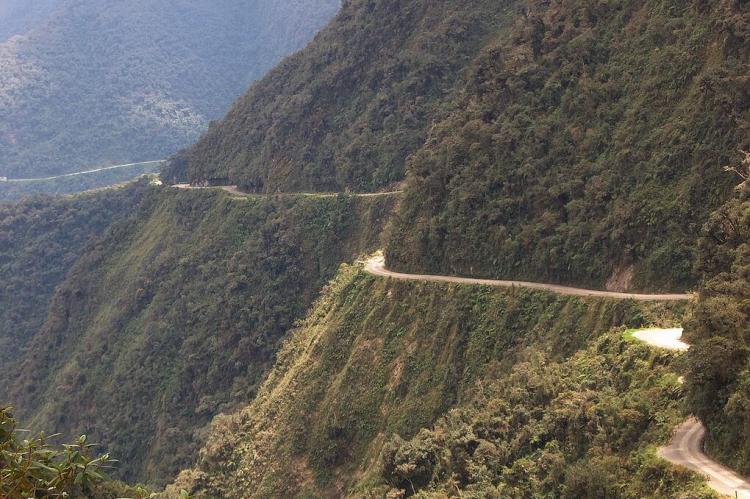The Bolivian Yungas: A Transitional Treasure Trove of Biodiversity
The Bolivian Yungas ecoregion in Bolivia and southeastern Peru is a significant transitional zone that connects the Southwest Amazon moist forests and the Central Andean dry puna and wet puna ecosystems, creating a diverse and unique landscape of ecological significance.
The Bolivian Yungas: A Transitional Treasure Trove of Biodiversity
Nestled along the eastern slopes of the Andes Mountains in west-central Bolivia and extreme southeastern Peru, the Bolivian Yungas ecoregion stands as a transitional zone of unparalleled ecological significance. This tropical and subtropical moist broadleaf forest forms a bridge between the lush Southwest Amazon moist forests to the northeast and the rugged Central Andean dry puna and Central Andean wet puna ecosystems to the southeast, creating a unique and diverse landscape that captivates naturalists and researchers alike.
A Complex Topography
Elevational Gradients
The Bolivian Yungas ecoregion spans a remarkable elevational range between 400 and 3,500 meters (1,300 to 11,500 feet) above sea level. This altitudinal gradient contributes to the region's topographic complexity, with the higher peaks representing distant Andean ridgetops that add to the area's diverse terrain.
A Heterogeneous Landscape
The topography of the Bolivian Yungas is intricate and heterogeneous, with many ecosystems intertwined within a relatively small geographic area. This diversity of habitats, coupled with the ecoregion's transitional position, has given rise to exceptional levels of biodiversity and endemism, making it a hotspot for scientific exploration and conservation efforts.
Climate and Vegetation
A Spectrum of Climatic Conditions
The climatic conditions within the Bolivian Yungas ecoregion vary significantly, ranging from tropical rainforest to tropical monsoon. Northern trade winds play a crucial role in maintaining the high humidity and precipitation levels that characterize the region, contributing to the lush and verdant landscapes that dominate the area.
A Mosaic of Forest Types
The vegetation of the Bolivian Yungas is a mosaic of tropical and subtropical moist broadleaf forests, including montane cloud forests and other evergreen forest types. These forests are often adorned with epiphytes, such as bromeliads, orchids, and tree ferns, adding to the region's visual splendor. Additionally, the ubiquitous presence of Chusquea bamboo further defines the unique character of this ecoregion.
Biodiversity Hotspot
Endemic Species Galore
The Bolivian Yungas ecoregion is renowned for its exceptional levels of endemism, with numerous species found nowhere else on Earth. This remarkable concentration of endemic flora and fauna directly results from the region's transitional position between vastly contrasting habitats and its highly heterogeneous topography, facilitating the evolution of specialized and adapted species over time.
Rare and Iconic Species
Among the rare and iconic species that call the Bolivian Yungas home are the elusive spectacled bear, the enigmatic Geoffroy's cat, and the striking green-capped tanager. These species and countless others contribute to the rich tapestry of life that characterizes this ecoregion, making it a priority for conservation efforts.
Conservation Challenges
Natural Barriers and Protection
The steep terrain, high precipitation levels, and difficult access to many areas within the Bolivian Yungas ecoregion have inadvertently served as natural barriers, helping to preserve much of this region in a relatively undisturbed state. Additionally, many protected areas have been established within the ecoregion, further safeguarding its ecological integrity.
Threats and Mitigation Efforts
Despite these natural and human-imposed protections, the Bolivian Yungas ecoregion faces threats from slash-and-burn practices as local agrarians seek to clear land for cash crop cultivation. This practice poses a significant risk to unprotected habitats and highlights the need for ongoing conservation efforts, sustainable land management practices, and community engagement to ensure the long-term preservation of this ecological gem.
Through scientific research, targeted conservation initiatives, and responsible eco-tourism development, the Bolivian Yungas ecoregion can continue to serve as a living laboratory for understanding the intricate connections between diverse ecosystems and as a sanctuary for the region's unparalleled biodiversity.

Map depicting the location of the Bolivian Yungas ecoregion (in purple).
